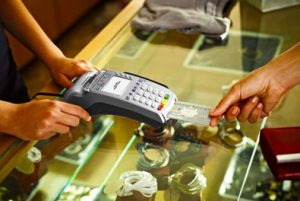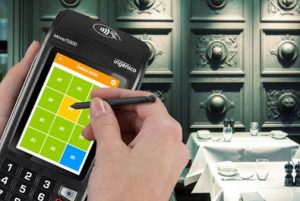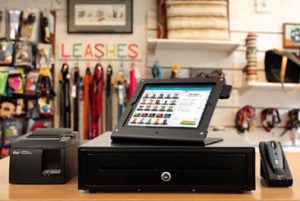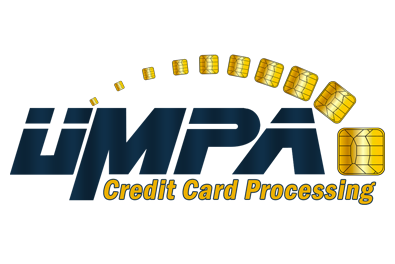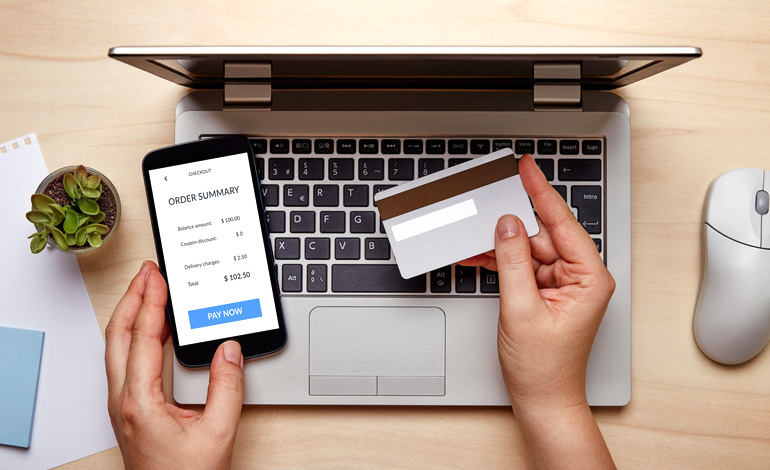Even locally run shops that aren’t trying to reach customers outside their immediate surroundings can improve their customer service and increase their bottom line by accepting online payments. We’ve put together five reasons for business owners to start accepting online payments:
1) Reach More People
By now, we all know that having a website is critical for almost any business today. But using an online store to supplement your business inherently makes it easier to help more people learn about what your business offers. Instead of relying solely on foot traffic and people driving by to discover your store, they are able to find information about your business on your website, and even if they don’t purchase anything online, their experience can help influence their decision to visit you in person.
If you’re sharing products on social media you may also have potential customers who aren’t able to visit in person, but who still want to make a purchase. Now that you’ve captured their attention with what you offer, you can convert them into a paying customer by letting them check out through your online store. It can be incredibly frustrating for customers when they find a product online that they can’t purchase because they are located in a different place than the business.
2) Setup Is Quick And Easy
Those unfamiliar with online payments might hesitate to add them because they might seem like they would be difficult to integrate and that the process would take time and money away from the already difficult task of running your business.
Luckily, advancements in technology have made adding online payments to your business easier than ever before. You can select the payment solution that works best for your business and integrate the functionality into your existing website with only a few clicks. Since you’re a UMPA merchant, you can add a hosted payment page to quickly begin accepting payments. You simply need to specify what information you want to collect from your customers, what amount you want to charge, and how you want the page to look and feel. There’s no need to hire a developer or bring someone else onto your payroll to set it up.
3) Increase Your Credibility
Many customers complete research online, even if they intend to make their final purchase in-store. Having an updated online store that includes helpful information about your business can help customers make informed purchase decisions. Giving customers the option to also make their purchase online can help improve their customer experience, whether they do decide to check out online, or still choose to come into your store to make their purchase, customers appreciate having the flexibility to choose the payment option that works best for them.
4) Makes Paying Convenient For Customers
Offering the payment method that your customers prefer can be the difference between completing a sale or missing out. Adding online payments to your business helps complete your payment ecosystem so that you have the tools in place to serve each customer according to their preferred payment method. Some customers will prefer to pay online over visiting your store location in person, and if you are unable to provide them with this option, then there is a good chance they will take their business to other retailers who can. You can also explore options where customers can pay online and pick up their purchase in-store, this can also streamline the buying process for both you and your customers. Don’t underestimate how effective a convenient payment process can be in converting customers from just browsing to completing their purchases.
5) More Sales
Ultimately, the purpose of adding online payments to your business is to improve your customer experience and make it easier for more customers to complete more purchases. Online payments provide you with an additional channel for completing sales and helping your business grow.
How Do I Get My Business Online?
You can easily incorporate an online payment system for your business through an online store, hosted payment pages, or by using a payment gateway.
What is a Payment Gateway? Hint: It’s Not a Virtual Terminal
Though they both rely on the internet to work, a payment gateway is not the same thing as a virtual terminal. So what’s the difference? Simply put, one is used by computer programs, the other is used by humans, though both have the same purpose: to accept an incoming credit card transaction.
A virtual terminal is a user-interface (often web-based) that allows merchants to log in to enter their customer’s credit card number and manually process a credit card payment. It is great for humans, but not made for programs to interact with.
A payment gateway (sometimes referred to as a payment API or RESTful API) is a specific URL that has no user-interface but is designed to receive an incoming transaction message.
What are Hosted Payment Pages?
If your business has an existing website and you want to add payment functionality to it without having to do any programming, then UMPA has the solution you’ve been looking for. When you have a Hosted Payment Page, customers start their shopping as usual, by visiting your website and browsing your products. Once they have finished adding items to their cart, they can proceed to the checkout. It’s here that they will access your Hosted Payment Page to complete the transaction, and the best part is, they won’t even realize that they have left your website! It’s a seamless integration that can make any site an online store.
Final Thoughts
Small businesses are always looking for an edge over the competition, or another way to grow their sales. Online payments are a great way to achieve both and do so with minimal investment. If you want to see how online payments can benefit your small business, feel free to contact your sales rep, or call (717) 832-0730 and we will be happy to answer any questions you might have.

